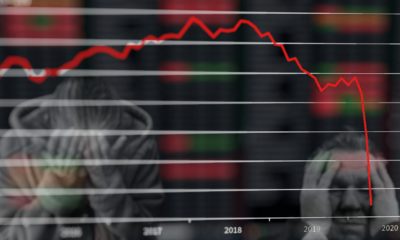Africa
Communal Capital Fund: Success of the bond issue of 2 MMDH
The amount subscribed within the framework of this operation amounts to more than $230,000 (2.07 MMDH), while the raising aimed at an outstanding amount of $220,000 (2 MMDH). The issue thus marks the start of the new $1 million (9 MMDH) loan program, authorized by its Board of Directors in May 2019.

The Communal Capital Fund has just successfully closed the bond issue for an amount of $220,000 (2 MMDH), the subscription of which took place from December 14th to 16th, 2020 inclusive. The amount subscribed within the framework of this operation amounted to $230,000 (MMDH 2.07 million).
The amount served at the end of the allocation concerned ordinary unlisted bonds at a rate of 2.25% annually revisable as from March 31st, 2022, with a maturity of 15 years and 104 days. Through this issue, the bank in charge of financing local authorities begins its new bond program of $1 million (9 MMDH). It follows the six bond issues carried out between 2012 and 2018, totaling a total amount of $890,000 (8 MMDH). Recourse to the bond market remains the means for the FEC to finance its activity, diversify its long-term financing sources, and continue to optimize the costs of such financing. Indeed, these bond issues are part of the financing policy adopted by the Fund, which favors the use of long-term resources offered by the bond market in line with the maturities of loans granted to customers.
Read more on the subject and find the most important economic news from around the world with the Born2Invest mobile app.
Growing financing needs
It must be said that the favorable evolution of the FEC’s credit activity in recent years has naturally resulted in an increase in the level of disbursements and financing needs, which required an increasing mobilization of resources. This growth will be maintained over the next few years, in view of the major development projects of local authorities, mainly the regions, launched at the national level.
At the end of September 2020, the FEC’s loan commitments reached $320,000 (2.85 MMDH). They mainly concerned the financing of urban upgrading and urban development programs, as well as the opening up of roads, through the construction of road infrastructure, 51% of the amount of which was within the framework of the Program for the Reduction of Territorial and Social Disparities (PRDTS) in rural areas. In addition, these loan commitments were for projects aimed at strengthening the fight against social insecurity, particularly by improving access to health care. Loan disbursements over the same period amounted to $270,000 (MMDH 2.42 million), down from the same period last year. According to the FEC, this is explained in particular by the time shift in the implementation of some projects financed by the institution. In addition, the bank anticipates that disbursements for the full year 2020 would be less intense than that observed in 2019, as a consequence of the current economic situation.
A maximum recovery rate
This being the case, and despite the context, the FEC’s GNP remained well oriented. It stood at $51 (457 MDH) on September 30th, 2020, up 12%. This performance results from the good performance of the activity, the level of recovery as well as a continuous optimization of the cost of mobilized resources. The recovery rate for the first nine months of 2020 would be 98%. “However, this level of recovery does not in any way predict the recovery rate for the next three months of 2020.
The assessment of the impact of the pandemic on the bank’s portfolio is continuously carried out and appropriate measures will be recommended to mitigate the consequences on the institution’s accounts”, stresses the bank which states that no provision for general risks related to this event has been recorded to date. As for the FEC’s financial indebtedness, it reached more than $2.23 million (20 MMDH) as of September 30th, 2020, which is mainly made up of resources mobilized on the domestic financial market, especially through bonds which represent more than 36% of the overall volume.
__
(Featured image by Lindsey LaMont via Unsplash)
DISCLAIMER: This article was written by a third party contributor and does not reflect the opinion of Born2Invest, its management, staff or its associates. Please review our disclaimer for more information.
This article may include forward-looking statements. These forward-looking statements generally are identified by the words “believe,” “project,” “estimate,” “become,” “plan,” “will,” and similar expressions. These forward-looking statements involve known and unknown risks as well as uncertainties, including those discussed in the following cautionary statements and elsewhere in this article and on this site. Although the Company may believe that its expectations are based on reasonable assumptions, the actual results that the Company may achieve may differ materially from any forward-looking statements, which reflect the opinions of the management of the Company only as of the date hereof. Additionally, please make sure to read these important disclosures.
First published in LesEco.ma, a third-party contributor translated and adapted the article from the original. In case of discrepancy, the original will prevail.
Although we made reasonable efforts to provide accurate translations, some parts may be incorrect. Born2Invest assumes no responsibility for errors, omissions or ambiguities in the translations provided on this website. Any person or entity relying on translated content does so at their own risk. Born2Invest is not responsible for losses caused by such reliance on the accuracy or reliability of translated information. If you wish to report an error or inaccuracy in the translation, we encourage you to contact us.

-

 Africa2 weeks ago
Africa2 weeks agoBank of Africa Launches MAD 1 Billion Perpetual Bond to Boost Capital and Drive Growth
-

 Markets2 days ago
Markets2 days agoCoffee Prices Decline Amid Rising Supply and Mixed Harvest Outlooks
-

 Crypto1 week ago
Crypto1 week agoBitcoin Recovers After U.S. Strikes Iran, While Altcoins Face Sharp Losses
-

 Africa7 days ago
Africa7 days agoMorocco’s Wheat Dependency Persists Despite Improved Harvest

























